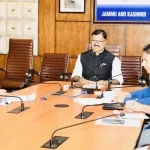IGNITING YOUNG MINDS
In the vibrant world of early education, how we teach shapes not just young minds but the future itself. Education is more than a transfer of facts—it’s a spark that ignites curiosity, fuels creativity, and equips children to conquer life’s challenges with confidence. Two approaches stand at the forefront of this transformative journey: traditional learning, with its structured, subject-specific focus, and thematic learning, a dynamic, interconnected method that brings knowledge to life. But which path truly prepares our children to thrive in an ever-changing, interconnected world? Let’s dive into the heart of this debate, exploring how thematic learning inspires a generation to dream big, think deeply, and live boldly.
The Structure of Traditional Learning
Traditional learning has been the bedrock of education for generations, offering a clear, disciplined approach to knowledge. It divides learning into distinct subjects—Mathematics, Language Arts, Science, and Social Studies—each taught in its own silo with specific curricula and assessments. Picture a classroom where children dedicate one hour to solving math problems, another to memorizing vocabulary, and a third to reciting historical facts. The focus is on repetition and mastery, with success measured by the ability to recall information on demand.
This method shines in its simplicity and structure. By breaking education into manageable chunks, traditional learning ensures children build a strong foundation in essential skills. Memorizing multiplication tables or mastering grammar rules creates a scaffold for advanced learning, equipping students for academic milestones like exams or certifications. Its standardized framework also makes progress easy to track, offering clear benchmarks for teachers and parents alike.
Yet, for all its strengths, traditional learning can feel like a puzzle with missing pieces. By isolating subjects, it often fails to show children how knowledge connects to the world around them. A child may ace a history test but struggle to grasp why those events matter today. Or they might solve algebraic equations flawlessly yet wonder, “When will I ever use this?” This disconnect can dampen curiosity, turning learning into a chore rather than a journey of discovery. In a world that demands adaptability and creative problem-solving, traditional learning’s rigid focus on rote memorization risks leaving children unprepared for life’s complexities.
The Magic of Thematic Learning
Enter thematic learning—a vibrant, holistic approach that weaves subjects together around a central theme, like Seasons, Transport, or Community Helpers. Instead of compartmentalizing knowledge, it creates a tapestry where Math, Language, Art, and Science blend seamlessly, reflecting the interconnectedness of life itself. Imagine a classroom buzzing with excitement over the theme of “Transport.” In Math, children count cars, buses, and trains, bringing numbers to life. In Language Arts, they craft stories about epic journeys, unleashing their imagination. In Art, they paint vibrant traffic signals, merging creativity with purpose. In Environmental Science, they explore why road rules keep us safe, sparking critical thinking about the world they navigate daily.
Thematic learning doesn’t just teach facts—it inspires children to experience, connect, and apply what they learn. A “Seasons” unit might see students measuring rainfall, writing poems about monsoon rains, and creating leaf collages, transforming abstract concepts into tangible, meaningful experiences. This approach taps into children’s natural curiosity, making learning a joyful adventure. By anchoring lessons in themes that resonate with their lives, it helps them see the relevance of their education, fostering a love for learning that lasts a lifetime.
Beyond academics, thematic learning cultivates skills that define success in the modern world: creativity, collaboration, and critical thinking. Group projects, like building a model bridge during a “Transport” unit, teach teamwork and innovation. Discussions about real-world issues, such as sustainability in a “Nature” theme, nurture empathy and civic responsibility. By engaging multiple senses and learning styles, thematic learning ensures every child—whether they thrive through words, numbers, or art—feels included and inspired.
A Head-to-Head Comparison
To determine which approach truly prepares children for life, we must look at their impact on cognitive, emotional, and social growth. Traditional learning lays a solid foundation, ensuring proficiency in core skills like reading, writing, and arithmetic—tools no child can do without. Its structured nature prepares students for standardized systems, from college entrance exams to professional certifications, where precision and discipline are key.
But the world today demands more than just academic prowess. In an era of rapid change, where innovation and adaptability reign supreme, children need to connect ideas across disciplines. Traditional learning’s siloed approach can stifle this, producing students who excel at tests but struggle to apply knowledge in real-world scenarios. A child who memorizes scientific formulas but can’t link them to environmental challenges may find themselves at a loss when faced with issues like climate change.
Thematic learning, by contrast, mirrors the interconnected nature of life. A “Community Helpers” theme might involve interviewing a firefighter, calculating response times, and writing a report—blending academic skills with real-world understanding. This approach fosters critical thinking and adaptability, preparing children to tackle multifaceted challenges with confidence. Emotionally, it captivates young learners by tapping into their innate curiosity. Themes like animals or space transform lessons into adventures, keeping children engaged and eager to learn. In contrast, the repetitive nature of traditional learning can lead to disengagement, especially for those who find rote tasks uninspiring.
Socially, thematic learning shines by encouraging collaboration. Group activities, like designing a community garden during a “Nature” unit, teach children to work together, a skill vital for future workplaces and communities. Traditional learning, while not without group work, often emphasizes individual achievement through grades, which may not fully prepare students for collaborative problem-solving.
Overcoming Challenges with Optimism
Some argue that thematic learning lacks the rigor of traditional methods, potentially leaving gaps in foundational skills. A child immersed in a “Transport” theme might spend less time drilling math facts, for instance. But this concern overlooks the flexibility of thematic learning. Counting vehicles or calculating travel times still hones math skills, but in a way that feels alive and relevant. With thoughtful design, thematic units can balance engagement with academic rigor, ensuring no skill is left behind.
Another challenge is the effort required to implement thematic learning. Crafting interdisciplinary units demands creativity and resources, which can be daunting for educators, and curriculum designers. Yet, with training and support, teachers can unlock the potential of this approach, creating lessons that inspire both themselves and their students. Traditional learning may be easier to implement with its ready-made curricula, but ease should not trump impact. The future deserves educators who dare to innovate.
Inspiring a Generation for Life
Education is not just about passing exams—it’s about preparing children to shape the world. In a society where information is at our fingertips and challenges are complex, rote memorization falls short. Children need to think critically, adapt swiftly, and connect ideas across boundaries. They need emotional resilience, social skills, and a sense of purpose that comes from understanding their role in the world.
Traditional learning offers a strong start, building essential skills with discipline and clarity. But its fragmented approach can leave children disconnected from the bigger picture, unprepared for the interdisciplinary demands of modern life. Thematic learning, with its vibrant, integrative approach, lights the way forward. By weaving subjects into meaningful themes, it empowers children to see connections, ask questions, and dream big. It transforms education into an adventure that sparks curiosity, fuels creativity, and builds confidence.
As we stand at the crossroads of education, let’s choose the path that inspires. Thematic learning doesn’t just teach children—it empowers them to become thinkers, creators, and changemakers. It’s an investment in a future where every child can navigate life’s challenges with joy and purpose. So, let’s embrace thematic learning and ignite young minds, because our children deserve an education that doesn’t just prepare them for tests—it prepares them to soar.
(Author is Teacher, Educator, Columnist, and Social media influencer. Email: [email protected])






